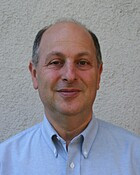This webinar is part of a series organized by CHE and the Boston University Superfund Research Program (BUSRP). Learn more about the CHE-BUSRP Partnership.
Many people know that drinking alcohol during pregnancy can be bad for the fetus, but how many people know that drinking water, if it contains certain toxicants, might also be a risk? Or that painting a baby’s room during pregnancy can increase the risk for childhood leukemia?
In this webinar Dr. Mark Miller, a pediatrician who heads up the Western States Pediatric Environmental Health Specialty Unit, addressed preconception and prenatal toxic exposures and childhood and later life health effects included in the multimedia eBook, A Story of Health. The free eBook includes chapters on asthma, childhood leukemia, and developmental disabilities, and a new chapter, “Reiko & Toshio’s story,” focusing on environmental influences on infertility and reproductive health. Dr. Miller also talked about outreach to young people and prevention.
Boston University Superfund Research Project (BUSRP) researcher Dr. Ann Aschengrau discussed her study on the linkages between prenatal and childhood exposure to tetrachloroethylene (PCE)-contaminated drinking water and increased occurrence of risk-taking behaviors as a teenager, including illicit drug use. Given the drug abuse crisis currently taking place in the United States, this study has important real-time policy implications. Dr. Aschengrau leads the BU SRP project “Impact of Early Life Exposure to Environmental and Social Stressors on Substance Use.”
Dr. Wendy Heiger-Bernays, Clinical Professor of Environmental Health at BU School of Public Health, moderated the webinar.
Featured Speakers
 Mark Miller, MD, MPH, is an Assistant Clinical Professor of Pediatrics and Occupational and Environmental Medicine at the University of California San Francisco (UCSF). He is also the co-director of the Western States Pediatric Environmental Health Specialty Unit (PEHSU) and the director of the Children’s Environmental Health Center at California Environmental Protection Agency. He received his medical degree and completed a pediatric residency at Michigan State University. He received his Master’s in Public Health in Environmental Health Sciences from UC Berkeley and completed a residency with the California Department of Health Services in Preventive Medicine. Dr. Miller is part of the development team and a primary author of A Story of Health, an award winning multi-media E-book and CE course on environment and health. He worked with Physicians for Social Responsibility to develop the Pediatric Environmental Health Toolkit, a resource to assist clinicians to incorporate preventive environmental health messages into routine pediatric care. He is a co-investigator and director of the Community Outreach and Translation Core at the UC Berkeley, Center for Integrative Research on Childhood Leukemia and the Environment (CIRCLE), where a diverse team of scientists is investigating environmental causes of childhood leukemia.
Mark Miller, MD, MPH, is an Assistant Clinical Professor of Pediatrics and Occupational and Environmental Medicine at the University of California San Francisco (UCSF). He is also the co-director of the Western States Pediatric Environmental Health Specialty Unit (PEHSU) and the director of the Children’s Environmental Health Center at California Environmental Protection Agency. He received his medical degree and completed a pediatric residency at Michigan State University. He received his Master’s in Public Health in Environmental Health Sciences from UC Berkeley and completed a residency with the California Department of Health Services in Preventive Medicine. Dr. Miller is part of the development team and a primary author of A Story of Health, an award winning multi-media E-book and CE course on environment and health. He worked with Physicians for Social Responsibility to develop the Pediatric Environmental Health Toolkit, a resource to assist clinicians to incorporate preventive environmental health messages into routine pediatric care. He is a co-investigator and director of the Community Outreach and Translation Core at the UC Berkeley, Center for Integrative Research on Childhood Leukemia and the Environment (CIRCLE), where a diverse team of scientists is investigating environmental causes of childhood leukemia.
 Ann Aschengrau, ScD, has conducted epidemiologic research on environmental pollution and the risk of disease for nearly 30 years. In particular, she has led investigations on the relationship between drinking water contaminants and abnormal pregnancy outcomes, neurological disorders, and cancer, and on the impact of lead hazard reduction measures among inner-city children. She is currently the principal investigator of a case-control study examining the risk of birth defects and stillbirths following prenatal exposure to tetrachloroethylene-contaminated drinking water. In 2003, Dr. Aschengrau published her first book, Essentials of Epidemiology in Public Health, with coauthor George R. Seage III, Professor of Epidemiology at Harvard School of Public Health. Now in its third edition, the best-selling book has been used in more than 100 schools across the United States. Dr. Aschengrau has served as a member of the Institute of Medicine Committee on Gulf War and Health, as a consultant to the Environmental Protection Agency and the Agency for Toxic Substances Disease Registry, and as a jury member for the annual John Heinz Memorial Award honoring an individual whose work has made a significant impact on the environment. She is currently an associate editor of the journal Environmental Health. She holds ScD and MS degrees from Harvard University, and a BA from Northeastern University.
Ann Aschengrau, ScD, has conducted epidemiologic research on environmental pollution and the risk of disease for nearly 30 years. In particular, she has led investigations on the relationship between drinking water contaminants and abnormal pregnancy outcomes, neurological disorders, and cancer, and on the impact of lead hazard reduction measures among inner-city children. She is currently the principal investigator of a case-control study examining the risk of birth defects and stillbirths following prenatal exposure to tetrachloroethylene-contaminated drinking water. In 2003, Dr. Aschengrau published her first book, Essentials of Epidemiology in Public Health, with coauthor George R. Seage III, Professor of Epidemiology at Harvard School of Public Health. Now in its third edition, the best-selling book has been used in more than 100 schools across the United States. Dr. Aschengrau has served as a member of the Institute of Medicine Committee on Gulf War and Health, as a consultant to the Environmental Protection Agency and the Agency for Toxic Substances Disease Registry, and as a jury member for the annual John Heinz Memorial Award honoring an individual whose work has made a significant impact on the environment. She is currently an associate editor of the journal Environmental Health. She holds ScD and MS degrees from Harvard University, and a BA from Northeastern University.
This webinar lasted for 1 hour and was recorded for our webinar and call archive.
